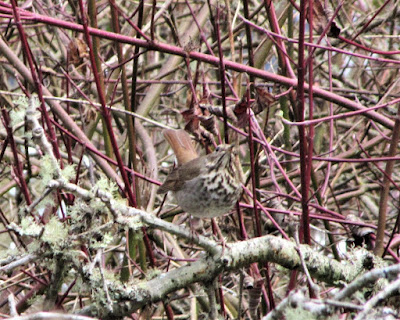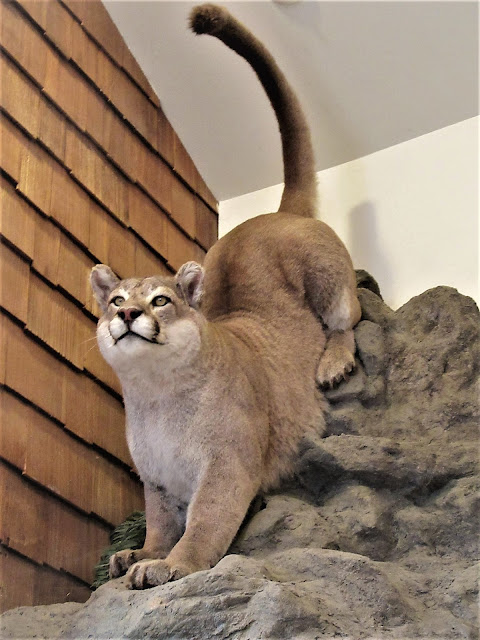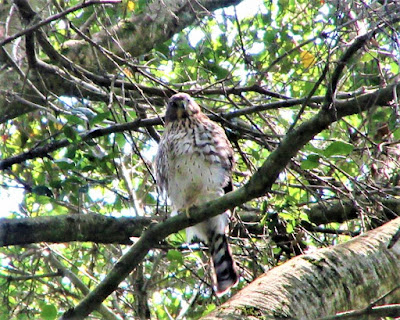One writes about the places
one cherishes and returns to
time and time again.
.jpg) |
| A drab Towhee showing off a subtle patch of blue |
Perhaps because each time,
and time again,
there's always something
new and different to experience.
 |
| Tilden Nature Area in autumn's colorful cloak |
Which accounts for my numerous posts
on the splendors and treasures
of Tilden Regional Park.
 |
| Juvenile Black-crowned Night Heron stalking |
 |
| Chestnut-backed Chickadee in a (rare) still moment |
There being grueling mountain bike rides to ridge tops hoping to spot Meadowlarks or Horned Larks, certain to see Red-tails circling or an American Kestrel perched on a fence post.
There being a recondite bend in the small but rugged and infinitely charming Wildcat Creek, where I first spotted a Wilson's Warbler and, like any discovery, waxed childlike in my enthusiasm at having finally spotted the marvelous bird.
 |
| Red-tailed Hawk perched on fence post |
 |
| Wildcat Creek raging after Spring rain |
There being Conlon Knoll, in a recent post, always a fun place to hang out in the vicinity where I saw my only Lazuli Buntings and Winter Wrens.
.jpg) |
| Mount Diablo vista from Tilden Park |
And there being . . . Jewel Lake and Tilden Nature Area . . . where birding is a year-round, world-class prospect. Fanatic birders, nature lovers and outdoor enthusiasts of all ages and abilities love the place.
 |
| Turtle convo on Jewel Lake |
Today, it's a sanctuary, a get-away, a must-do / must have place of spiritual retreat where I go to wind down and just take a long slow look around.
 |
| Wild Turkeys are abundant in the Berkeley Hills (and flats!) |
Instagram that!
 |
| Beautiful tree along Laurel Canyon trail in Tilden Park |
Perhaps my affinity owes itself more to proximity and ease of access than to – blasphemy! it being a very beautiful place and ecological wonderland. After all, where else does a car-free couple have to go?
 |
| Robin gathering nesting material on the creek |
But now that I know what I know, and being a birder on top of it, I designate this little parcel of protected land, with a creek running through it, to be a VSP:
 |
| Seasonal artery to Jewel Lake in the heart of Tilden Nature Area |
Take yesterday, for example,
where in a few short, quickly passing hours
I spotted 30 different birds!
 |
| Black Phoebe taking a time out |
Twitter that!
 |
| My first sighting of a Warbling Vireo in Tilden Nature Area |
Including my second sighting ever of a Warbling Vireo! I spot the little cuss in a tree near the Boardwalk – managing a decent snapshot! Oddly, this guy looks quite different in color and appearance from the less distinct image of the same bird I spotted – ecstatically! – (in the same area) – a few months ago.
 |
| Tilden Nature Area boardwalk showcasing ancient Horsetail stand |
Could be an "Adult, Eastern" variety, but probably not. AllAboutBirds, even though it's barely spring, notes:
"Worn midsummer birds
can be nearly entirely gray
above and whitish below."
 |
| Hermit or Wood Thrush, I never know! |
Which describes my baby. See for yourself. Probably not an Eastern, but the difference is subtle, and my two sightings seem like two different birds.
 |
| Fox Sparrow poking around |
I'd heard Wilson's Warblers were out 'n about in force, but I only saw one or two, and for just a short time, on the Boardwalk – fabulous habitat for birds along Wildcat Creek in thick protected forest. Nothing doing for a photograph or hearing their sweet "chip chip" calls.
 |
| Jewel Lake overrun by Wildcat Creek flooding (big rain!) |
Do see two Steller's Jays, which an elderly gentleman I meet soon thereafter – John Smayles, walking with his grandson – claims are imitating the cawing of a Hawk. Never heard of it, I say, but he says, yes, it's true, and we go on to have an hour long conversation about birds, birding, "birdier than thou" people, and his association as one-time director of the Point Reyes Bird Observatory back in the seventies.
 |
| John Smayles |
Engaged in a story he's telling about the subtle nuances between certain species of Terns, suddenly, high in the eucalyptus branches, two Hawks cry out and begin to scuffle, one soon flying off.
 |
| Red-shouldered Hawk in the Ukes of Tilden |
Turns out, they're Red-shouldered Hawks, and despite Mr. Smayle's determination, I suspect they provided the earlier "imitation" Jay caws . . . but I could be wrong, and Mr. Smayle sure seems intent on that as being the explanation. As well as a bit annoyed with me.
 |
| Spotted Towhee in the brush |
.jpg) |
| Some kind of ground foraging Sparrow |
Around the lake,
including the marshy pond area,
I see ton of birds:
 |
| Woodrat nests abound in the dense woodlands, even in treetops |
All the usual Warblers and Juncos
and Woodpeckers and Goldfinches
and Sparrows and whonot.
 |
| Belted Kingfisher zooming in for a landing |
And some unID'd Flycatchers
performing aerial antics
over the replenished lake surface,
then landing to roost
like a pair of love birds
in willow branches.
 |
| Anna's Hummingbird inspecting something |
Who are you, my friends?
I cannot ID you by the book.
 |
| Tilden Nature Area seasonal newt ponds under rehab |
 |
| Young buck hiding out |
Four deer crash through a woodsy curtain
down a gully and out of sight.
.jpg) |
| Jewel Lake from the impoundment's Spillway |
Minnows or tadpoles – which would a fourth grader say? –
can be found in the muddy shores of the lake.
 |
| Pacific Tree Frog poking out of thrushes |
Tiny green Pacific Tree frogs mate in season and can be seen clinging to sedge grasses in the marshes like tiny survivors holding on for dear life until big enough to retreat to the safety of the tall trees where they chirp up a cacophonous chorus announcing territorial and amorous intentions.
 |
| Western Fence Lizard |
Western Fence Lizards dart and scurry on rocks,
posing languidly in sunny patches,
or actively, doing "push-ups."
 |
| Mountain Lion on display at Tilden Nature Area Environmental Education Center |
One of these days, a mountain lion.
.jpg) |
| Great Blue Heron on the lookout |
And always, blessings from birds who come near and far
to find welcoming shelter and plenty of pickings
in the lush surroundings of Tilden Nature Area.
 |
| Band-tailed Pigeon settling in |
That's how wild the Berkeley Hills are.
 |
| Trail through the woods |
Read more essays from Gambolin' Man
on birding in beautiful & hidden Wildcat Creek & the Watershed,
along with a link to all bird posts at his backyard bird blog:
Read more from Gambolin' Man
about the simple wonders & charming splendors
of Wildcat Creek (& watershed) in the Berkeley Hills:
















.jpeg)

.JPG)







.JPG)






.jpg)
.JPG)


.jpg)
